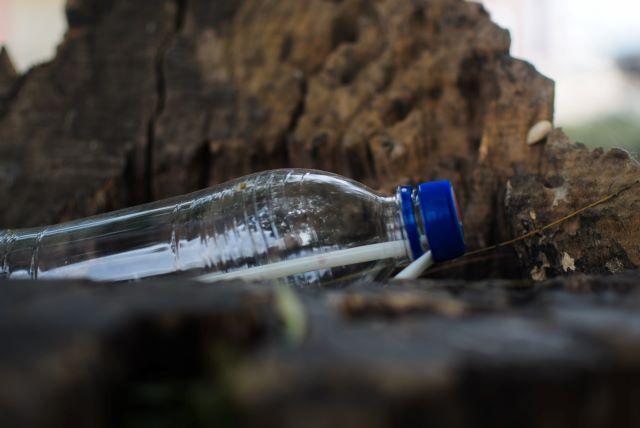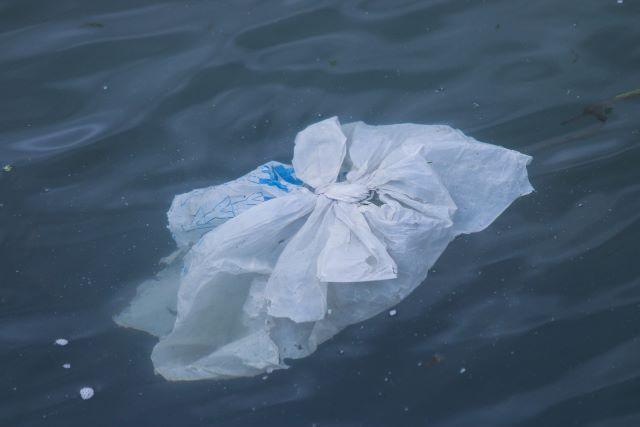In today’s world, the impact of single-use plastics on the environment has become a pressing concern, and it extends far beyond urban areas. Even in the serene beauty of the great outdoors, these plastics threaten the delicate balance of our ecosystems.
From disposable water bottles left on hiking trails to plastic utensils discarded at campsites, the consequences of our convenience-driven plastic consumption are impossible to ignore. In this article, we will delve into the dangers posed by single-use plastics in outdoor environments and explore practical ways to reduce your environmental footprint while enjoying the natural wonders of our planet.

Whether you’re an avid adventurer or simply appreciate the tranquility of nature, adopting sustainable practices is essential for preserving these outdoor spaces for generations to come.
Understanding Single-Use Plastics
Single-use plastics are items designed for one-time or short-term use before disposal. They are lightweight, convenient, and cost-effective for manufacturers, making them ubiquitous in our daily lives. However, this convenience comes at a significant environmental cost when these plastics find their way into natural environments.
Common examples include plastic bags, straws, food packaging, disposable cutlery, and, perhaps most notably, water bottles. These items are often used briefly but persist in the environment for hundreds of years, breaking down into smaller, harmful microplastics that infiltrate ecosystems and pose threats to wildlife.

As outdoor enthusiasts, it’s crucial to recognize the role of single-use plastics in environmental degradation and take proactive steps to reduce their impact during our adventures.
Environmental Impact of Single-Use Plastics
The widespread use and improper disposal of single-use plastics have led to a severe environmental crisis. These plastics are non-biodegradable, meaning they do not break down naturally over time. Instead, they fragment into smaller pieces known as microplastics, which can persist in ecosystems for centuries.
This persistence leads to several harmful consequences for the environment. Plastic pollution in oceans, rivers, and forests harms wildlife, disrupts ecosystems, and releases toxins into the environment. Marine creatures ingest plastics, mistaking them for food, which can lead to injury or death. Moreover, the production of single-use plastics contributes to greenhouse gas emissions, exacerbating climate change.
As responsible outdoor enthusiasts, it is crucial to understand the environmental repercussions of single-use plastics and adopt eco-friendly practices to minimize their impact while enjoying the great outdoors.
Risks to Wildlife and Ecosystems
Single-use plastics pose significant risks to wildlife and ecosystems. These items often end up as litter in natural environments, including forests, rivers, oceans, and parks. Wildlife can become entangled in plastic debris or ingest it, leading to injury, suffocation, or death. Sea birds, marine mammals, and fish are particularly vulnerable to plastic pollution in oceans and waterways.

Moreover, the accumulation of plastic waste disrupts ecosystems and can harm species at various levels of the food chain. Microplastics, the tiny fragments into which plastics degrade, can enter the food web, potentially affecting human health when we consume seafood.
Protecting the natural world and its inhabitants from the detrimental effects of single-use plastics requires concerted efforts to reduce, reuse, and recycle these materials, as well as raise awareness about their ecological impact.
Plastic Pollution in Outdoor Environments
The menace of plastic pollution in outdoor environments is a growing concern. When people visit natural spaces, they often bring single-use plastics with them, such as water bottles, food containers, and plastic bags. Unfortunately, these items can be inadvertently left behind, especially in popular hiking trails, camping sites, and recreational areas.
The accumulation of plastic waste not only mars the pristine beauty of these places but also poses severe threats to the local flora and fauna. Plastic pollution can leach harmful chemicals into the soil and water, impacting plant growth and aquatic life. Additionally, plastics can take hundreds of years to decompose fully, creating a long-lasting problem in otherwise unspoiled landscapes.

To protect the great outdoors and minimize our ecological footprint, it’s essential to adopt sustainable practices, reduce single-use plastic consumption, and engage in responsible waste disposal when enjoying nature.
Steps to Reduce Your Environmental Footprint
Bring Reusable Water Bottles and Containers
One of the most effective ways to combat the dangers of single-use plastics in the outdoors is to bring your reusable water bottles and containers. By doing so, you can significantly reduce the need for disposable plastic bottles, which are a major contributor to plastic waste in natural settings.
Investing in a high-quality reusable water bottle not only helps the environment but also ensures you have access to clean drinking water during your outdoor adventures. Many outdoor enthusiasts now opt for durable stainless steel or BPA-free plastic bottles that can be refilled and used for years, eliminating the need for single-use plastic bottles. Additionally, packing reusable food containers can help minimize plastic waste generated during picnics or camping trips.

These containers are designed to be washable and reusable, making them an eco-friendly alternative to disposable options. By simply swapping out single-use plastics for reusable alternatives, you can significantly reduce your environmental footprint and contribute to the preservation of the natural beauty of outdoor spaces.
Choose Eco-Friendly Alternatives
Opting for eco-friendly alternatives to single-use plastics is another effective strategy to reduce your environmental footprint in outdoor settings. Many companies now offer sustainable outdoor gear and products that are designed with the environment in mind. For example, you can find eco-friendly camping utensils made from bamboo or stainless steel, replacing disposable plastic cutlery.
Similarly, eco-conscious outdoor enthusiasts can choose reusable cloth bags for packing snacks or collecting trash instead of relying on plastic bags. These small choices add up and can help minimize plastic waste in the outdoors. When shopping for outdoor equipment or supplies, look for products that prioritize sustainability, such as tents made from recycled materials or eco-friendly fire starters.
By supporting companies committed to reducing their environmental impact, you contribute to the larger effort to combat plastic pollution and preserve the beauty of outdoor environments.
Proper Waste Disposal
Responsible waste disposal is crucial when you’re spending time in the outdoors. Always carry trash bags with you to collect and pack out all your waste, including food wrappers, used toiletries, and any other litter you generate. Dispose of your trash in designated receptacles or take it with you until you can properly dispose of it in a waste management facility.
Never leave trash or litter behind, as it not only mars the natural beauty of outdoor spaces but also poses risks to wildlife.

For items like used toilet paper and hygiene products, use eco-friendly alternatives or follow Leave No Trace principles, which often recommend packing out such waste in specialized bags. In wilderness areas, there are specific regulations for waste disposal, and you may need to carry a portable toilet or use established facilities.
By practicing proper waste disposal, you help ensure that single-use plastics and other waste materials don’t end up contaminating the environment, including water sources and habitats for wildlife. Your commitment to leaving nature cleaner than you found it contributes to a healthier and more pristine outdoors for all to enjoy.
Participate in Clean-up Initiatives
Get involved in local clean-up efforts and volunteer with organizations dedicated to environmental conservation. Many outdoor enthusiasts and environmental groups organize clean-up events in natural areas, including beaches, parks, and hiking trails. Joining these initiatives allows you to make a direct and positive impact on the environment by helping remove single-use plastics and other litter from these outdoor spaces.
These clean-up events also raise awareness about the dangers of single-use plastics and promote responsible outdoor recreation practices. By participating, you contribute to the collective effort to reduce plastic pollution in the outdoors, making these spaces cleaner and safer for both humans and wildlife.

Additionally, consider organizing your clean-up activities or encouraging others to do so. Whether it’s a small group effort or a larger community event, every initiative counts toward reducing the environmental footprint of single-use plastics in outdoor environments.
Spread Awareness and Advocate for Change
Raise awareness about the environmental harm caused by single-use plastics among your social networks. Encourage friends and family to make eco-friendly choices. Support organizations working to reduce plastic pollution through awareness campaigns and policy advocacy.
Engage with policymakers and participate in campaigns for stricter regulations and sustainable alternatives to single-use plastics. Your involvement can make a significant difference in combatting plastic pollution and protecting the environment.
Final thoughts
The issue of single-use plastics in outdoor environments is a pressing concern that demands our attention and action. By understanding the environmental impact of these plastics, adopting eco-friendly alternatives, practicing proper waste disposal, and actively participating in clean-up efforts, we can reduce our environmental footprint and preserve the natural beauty of outdoor spaces.

It’s our collective responsibility to protect wildlife, ecosystems, and the planet from the dangers of single-use plastics. Together, we can make a positive impact and pave the way for a cleaner and more sustainable future.









